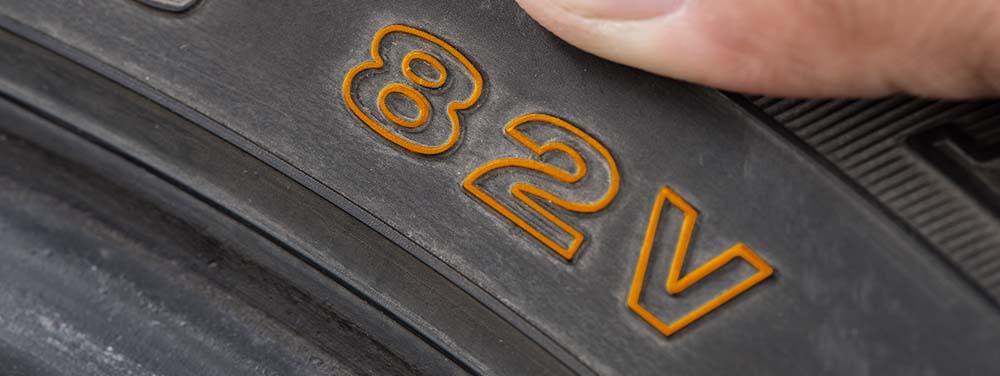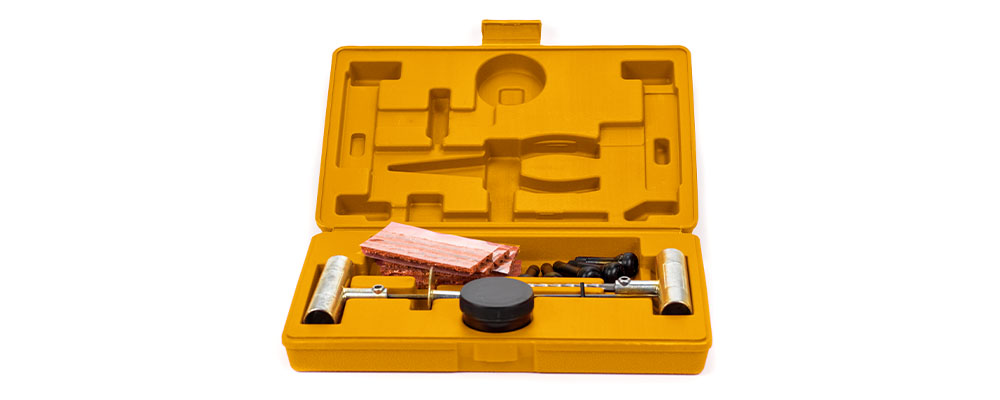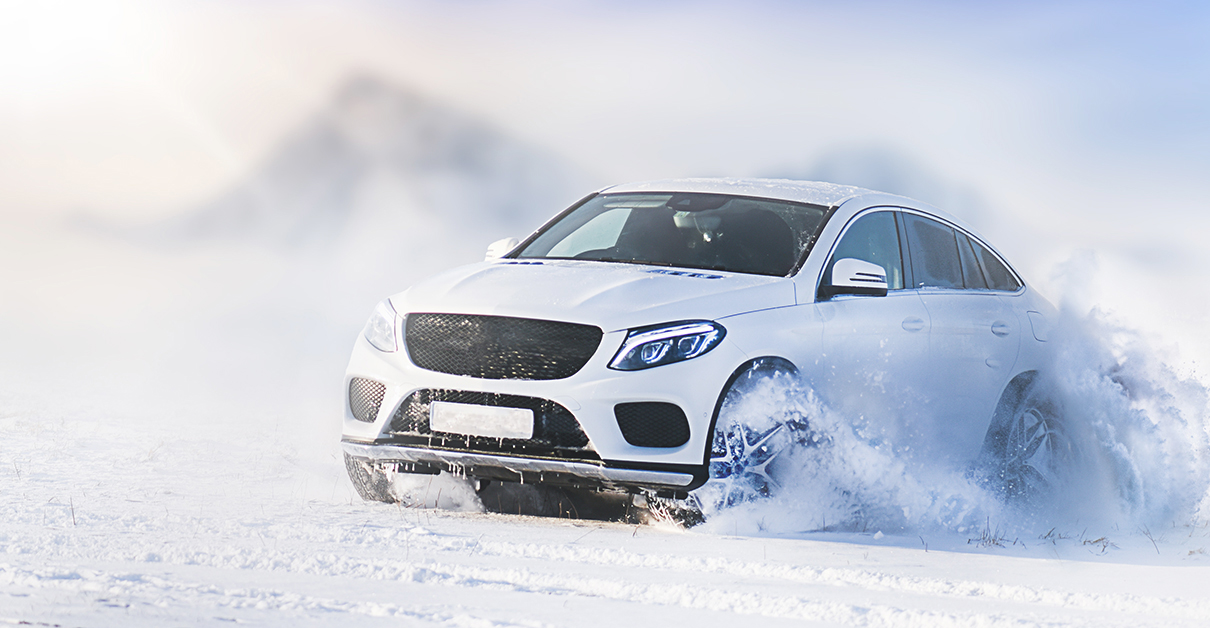Table of Contents
A flat tire is never a fun experience. From being stranded on the road to having to change the damaged tire, many drivers are often not prepared to handle the situation.
Whether a puncture or tire blowout causes the flat, it is important to stay on top of things. Changing or plugging a flat tire, especially when you don't know what you are doing, can be time-consuming.
So, can you drive on flat tires to save some time?
While you might think it is a good idea, don't. When you drive on a flat tire you put both the rim and the vehicle at risk of damage.


What Causes Flat Tires?
Air pressure loss in a tire can occur for multiple reasons. However, the two most common ones are improper tire maintenance and external damage.
Improper Tire Maintenance
Irregularly or completely worn-out tires, low tire pressure, or excess pressure placed on the tire can cause it to become faulty. Such tires might develop a slow leak and lose air pressure over time. However, that is not always the case.
Buy the best All Season Tires at affordable prices! Find excellent-quality Truck/SUV Tires for sale at
When a slow leak occurs, the tire pressure monitoring system, or TPMS, won't help you. This sensor is designed to only lights up when the PSI is already too low. By that time, you might already be close to a completely flat tire.
External Damage
Further issues tires face are foreign objects littered on the road surface and various dangers on the road. These can cause tire damage in a blink of an eye if you are not careful.
Punctured tires can also develop a slow leak from small punctures, but they can also lose all tire pressure at once. Additionally, they can be the sole reason for structural damage. They are a major inconvenience to every driver since often they cannot be prevented.
What Are the Dangers of a Flat Tire?
Before we start, let's clear some things up.
No, you should not drive on a flat tire. Short-distance driving might be an option if the tires gradually lose air pressure. However, if the tire blows out or has immediate PSI loss, you won't be able to drive on the tire.
That being said, when you drive on a flat tire it damages the rim and the vehicle. Yet, horror movies lie to you and this doesn't render the vehicle undrivable. So, if you are in danger, don't stop! But apart from such situations, minimize the distance you drive on a flat tire.
So, what exactly happens when you drive on flat tires?
When it comes to the tires, driving them when they are flat will create further damage. Small punctures and other similar issues can be repaired easily in a tire shop. However, when you drive on a flat tire, it quickly becomes unusable.
Once the rims come into contact with the tread's inner lining, it shreds it up. If that happens, tire repair is no longer possible as the tire's internal and external structure gets damaged.
Furthermore, when the vehicle's weight rests on the rims instead of the tire, they also get damaged. The rims can become bent or wrapped on its edges. If you are lucky, the rim will be bent, but it will be still repairable. If you are not lucky, costly rim replacements are in your future.
How Does Driving on a Flat Tire Affect Vehicle Safety?
Apart from the tire and rim, a flat tire can also damage the vehicle and its various parts. Short-distance driving will not cause such problems, but using a flat tire for a longer period of time can cause harm to essential vehicle parts. These parts include the brake lines, suspension parts, rotors, etc.


Damage to these parts is one problem, the other is vehicle control. When there is not a tire on the rim, the vehicle's steering becomes erratic. It not only damages vehicle parts, but it causes the driver to lose control over the steering.
How to Avoid Flat Tires
Often, a flat tire can't be avoided. Road hazards, sharp rock, and other foreign objects can easily harm the tread and casing.
However, there are a few things we can do in order to prevent driving on a flat tire.
Buy the best Winter Tires at affordable prices! Find excellent-quality Truck/SUV Tires for sale at
Tire Pressure
Check tire pressure regularly. Over- or under-inflated tires will develop irregular wear formations. Furthermore, they can lower fuel efficiency by increasing the rolling resistance.
You can check the recommended tire pressure in the vehicle's owner's manual or on the label located on the driver-side door. The maximum pressure levels should not be exceeded as it can also lead to you driving on a flat tire.
Tire Maintenance
The tire's tread depth and wear manner should be inspected as well. If you notice the tire is starting to develop uneven wear, take your vehicle to the repair shop. There are different reasons why tires can wear in an irregular manner.
The wheel alignment can be the culprit. Additionally, driving on tires with a low tread depth can decrease the tire's damage resistance. While it is not a problem at slow speeds, it can actually create bigger issues, like ruining the vehicle's controllability.


Tire Rotations
Rotating your tires every 5,000 miles will help to even out the tread wear. This lengthens the tire's service life by avoiding accelerated and uneven wear. Tire rotations allow the tires to experience different types of pressure, which makes all four tires wear at the same level.
Tires rotated help to prevent slow leaks and bulging sidewalls, as they optimize the pressure placed on the tires. During rotations, the tires can also be inspected and checked for any possible problems, which can be prevented in time.
Load and Speed Ratings
Tires are marked with their maximum load rating and highest speed durability. These can be found on the tire's sidewall, after the tire size. But, what do they represent?
The short answer is: the load rating is the tire load limit, while the speed rating is the maximum speed limit the tire can be driven on.
Exceeding these numbers put extra pressure on the tire, which can cause damage and tire blowout. Tire brands adjust the tires' load and speed durability for a good reason. Staying within the advertized load and speed limits will help you prevent damage.
Learn more about the speed and load ratings!


Road Hazards
Road hazards are the hardest thing to evade from this list. You cannot check for them and they can appear out of nowhere. The only thing drivers can do is to keep an eye on the road ahead or take an alternate route.
Running over a pothole doesn't necessarily cause damage. However, it can create a small or large puncture on the tire. If there is no way to get around a damaged road surface, drive slowly. Going over a pothole at reduced speeds will help minimize the possible harm to the tires.
Check out Priority Tire's blog post on avoiding potholes if you are interested in learning more about the topic.
Spare Tire vs. Run Flat Tires
Sometimes there is no way to prevent damage, but we can be prepared for it. There are a few options to choose from.
The first is getting a spare tire for the car. Spare tires can be categorized in different ways. You have the regular spare tire (which is basically a 5th tire) and temporary spare tires (which give the vehicle a limited performance). Yet, both types need to be mounted on the car after low-pressure levels are detected.
Another way to not drive on a flat tire is to equip the car with run flat tires. Run flat tires are manufactured with reinforced sidewalls, which withstand the weight of the vehicle even at low tire pressure levels. Run flats offer a 50 mile, 50 mph performance, which means you won't have to stop to change the flat tire.
However, there is a downside to run flat tires. A punctured tire, if it is a run flat, will need to be replaced with a new tire, as it will not be able to perform in the same manner afterward.


How to Fix a Flat Tire?
Driving on a flat tire is never ideal. We have mentioned the consequences of it above. So, what can you do to fix a flat tire?
If you do not wish to call a tow truck and need to fix the tire on the go, there are a few options you can take. Temporary fixing solutions or a spare tire will be of great help until you can get your car to a mechanic.
These are the steps you need to take:
- Locate the hole
- Jack up the car
- Clean the hole if you can
- Plug the hole and inflate the tire
- Visit a tire shop
Buy the best Summer Tires at affordable prices! Find excellent-quality Truck/SUV Tires for sale at
Locate the Hole on the Tire
When you notice low tire pressure levels, drive at a slow speed to a nearby area where you can pull over. Turn on your hazard lights once you stop. Check the flat tire to locate the damaged area. If the damage is noticeable, your job will be easier. Mark that area for later.
Jack Up the Car and Remove the Tire
You will need to start work on the vehicle in order to take off the punctured tire. Loosen the lug nuts holding the tire using a wrench and jack up your car. This is to make tire removal easier. It needs to be off the ground for it to be possible.


Clean the Hole and Damaged Area
If you have a spare tire, skip this step. If you don't have one and prefer to use an emergency plug kit, you will need to clean the hole once the tire is off the base.
Plug the Hole and Inflate the Tire
You can purchase a temporary plug kit or emergency sealant at most tire stores. Once the damaged area on the flat tire is cleaned, you can use these methods to seal the puncture. Let the adhesive dry before using an air pump to inflate the tires. Reattach the tire on the car.


Visit a Tire Repair Shop
While it is possible that other drivers are mechanics, the reality is that most of us aren't one. Therefore, the safest bet is to take the flat tire to a professional. They will be able to assess the damage and either repair the hole with a permanent solution or let you know which new tire will work best for your car.
Sadly, not all punctures can be sealed. Sometimes, it is better to purchase new tires instead of driving on dangerously repaired models. At Priority Tire, you can find excellent-quality tires for sale at the best prices on the online tire market.







Login and Registration Form